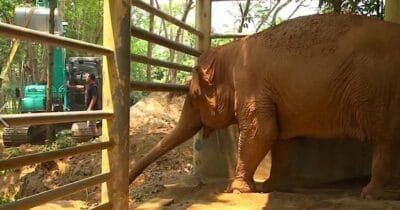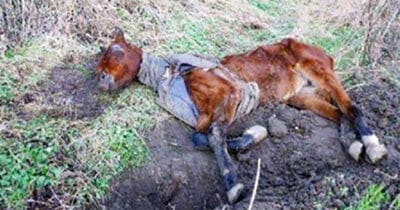
In November, the Smithsonian National Zoo’s resident giant pandas returned to China, marking the first time in 50 years there would be no pandas in Washington DC.
Many fans wondered if this was truly the end, as decades of “panda diplomacy” between the US and China seemingly eroded. But today, there’s been an exciting new update: two giant pandas are headed to Washington this year.
Pandas returning to DC
A pair of giant pandas — male Bao Li and female Qing Bao — will arrive at the National Zoo by the end of this year from China. Both pandas are two years old.

The exciting news was announced in a video featuring Smithsonian Secretary Lonnie G. Bunch III and Smith and First Lady Dr. Jill Biden.
“It’s official: the pandas are coming back to D.C.!” the first lady says. “We can’t wait to celebrate this historic moment here in our nation’s capital.”
Both bears will be new arrivals to the zoo, but Bao Li has a familial connection to DC: his mother was born there in 2013, and his grandparents Tian Tian and Mei Xiang lived there from 2000 to 2023.
“We’re thrilled to announce the next chapter of our breeding and conservation partnership begins by welcoming two new bears, including a descendent of our beloved panda family, to Washington, D.C.,” Brandie Smith, NZCBI’s John and Adrienne Mars Director, said in a press release.
“This historic moment is proof positive our collaboration with Chinese colleagues has made an irrefutable impact. Through this partnership, we have grown the panda population, advanced our shared understanding of how to care for this beloved bear and learned what’s needed to protect wild pandas and preserve native habitat.”

Pandas returned to China last year
The upcoming move will resume a program that was a beloved fixture at the National Zoo for 50 years, in which pandas on loan from China were visible to guests for free. In addition to delighting zoo visitors, the pandas were a symbol of diplomatic US-China relations.
In November, the program seemingly came to an end after the zoo’s three resident pandas — Tian Tian, Mei Xiang and their offspring Xiao Qi Ji — were shipped back to China as their lease agreement expired, a move that seemingly reflected the growing political conflict between the two nations and left the nation’s capital panda-free for the first time since the Nixon administration.

At the time, many fans went to visit the pandas, worrying it could be their last-ever opportunity to see these beautiful animals in person.
“It’s probably going to be a long time, possibly one of the last times I see a panda in captivity,” Ryan Nickol, who traveled from Pennsylvania to see the pandas multiple times ahead of the transfer, told NBC News. “It’s pretty frustrating and also a little sad.”
But authorities on both sides had expressed cautious optimism that “panda diplomacy” might resume at some point, with National Zoo staff calling it a “hiatus.”
“As this chapter of our giant panda program closes, we remain committed to the conservation of this species and look forward to continued collaboration with our Chinese colleagues,” Brandie Smith said at the time.

Meanwhile, Chinese leader Xi Jinping also left the door open for pandas to return, describing the pandas as “envoys of friendship between the Chinese and American peoples” and that they were “ready to continue our cooperation with the United States on panda conservation.”
Panda diplomacy: history of pandas in the US
Giant pandas are native only to China, but the country has gifted or leased pandas to countries around the world as part of a practice called “panda diplomacy.” For China, the pandas act as a symbol of diplomatic ties with other nations.
Pandas were first given to the United States in 1972, gifted from Mao Zedong to US President Richard Nixon as part of developing ties between the two nations. First Lady Pat Nixon donated the pandas to the National Zoo, where they became a sensation, attracting over a million visitors within the first year.

In 1984, China changed their policy, saying that countries would be leased instead of gifted to other countries. Beginning in 1991, China offered ten-year leases on pandas, in exchange for a $1 million fee per year, and under the condition that any cubs born during the lease would belong to China.
This international program has contributed to the successful conservation of pandas. In 2021, it was announced that the long-struggling species was no longer endangered, but downgraded to “vulnerable.”
“The two sides have formed good cooperative relations, achieved fruitful results and played a positive role in protecting endangered species,” spokesperson Mao Ning of China’s Ministry of Foreign Affairs said, according to CNN. “The purpose is to better protect endangered species and promote global biodiversity conservation.”
We’re so glad that pandas will be returning to the National Zoo in Washington DC this year! 🐼❤️
Please share this story!






